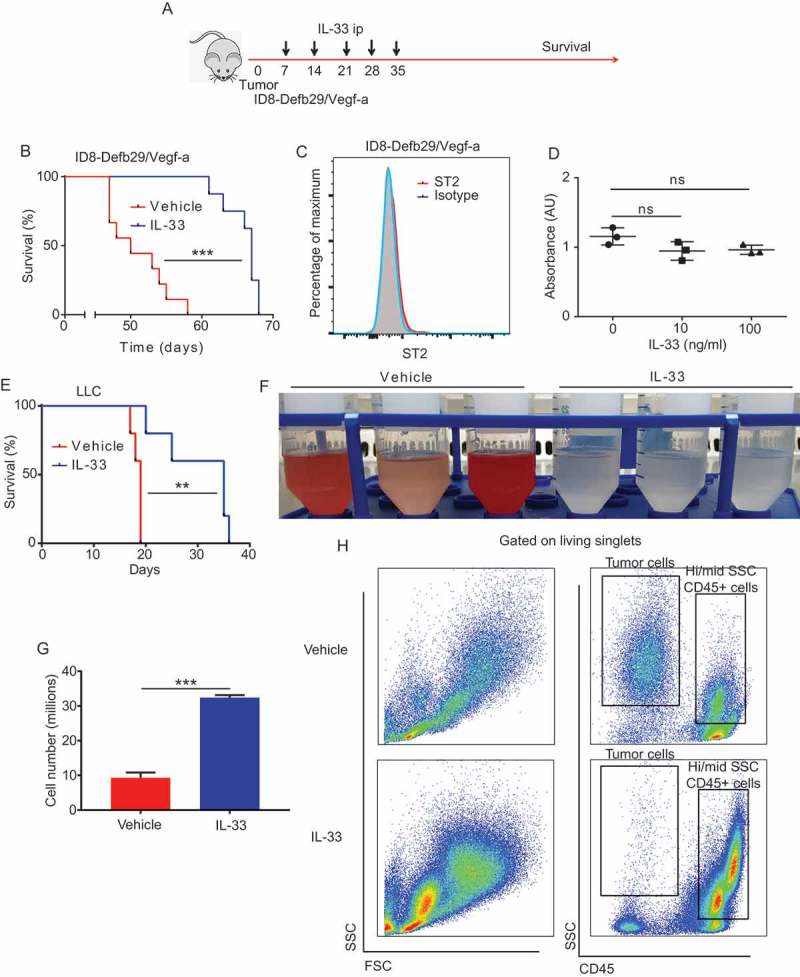Figure 1.

IL-33 delays ovarian cancer tumor progression.
(A) Schematic of IL-33 survival experiments (B) Survival plot of mice bearing intraperitoneal ID8-Defb29/Vegf-a syngeneic tumors treated intraperitoneally with IL-33 or PBS at days 7, 14, 21, 28 and 35 after tumor challenge (n = 9 per group, pooled from 2 independent experiments). (C) Expression flow cytometry of ST2 receptor by ID8-Defb29/Vegf-a (2 independent experiments) (D) ID8-Defb29/Vegf-a in vitro proliferation in the presence of IL-33 (n = 3 per group; 2 independent experiments) (E) Survival plot of mice bearing intraperitoneal Lewis lung carcinoma treated intraperitoneally with IL-33 or PBS at days 7, 8, 9, 10 and 11 after tumor challenge (n = 5 per group). (F) Peritoneal wash of mice bearing intraperitoneal ID8-Defb29/Vegf-a syngeneic tumors treated intraperitoneally with IL-33 or PBS at days 21 and 28, harvested at day 30 (n = 3mice per group; 3 independent experiments). (G) Cell count from peritoneal wash of mice bearing intraperitoneal ID8-Defb29/Vegf-a syngeneic tumors treated intraperitoneally with IL-33 or PBS at days 21 and 28, harvested at day 30 (> 3 independent experiments). (H) Representative flow cytometry plots of the ascites fluid (tumor microenvironment) of mice bearing intraperitoneal ID8-Defb29/Vegf-a syngeneic tumors treated intraperitoneally with mature IL-33 or PBS at days 21 and 28, harvested at day 30. (> 3 independent experiments). Log-Rank test, ANOVA, t-test. AU: arbitrary units, ns: not significant, **p < 0.01, ***p < 0.001.
